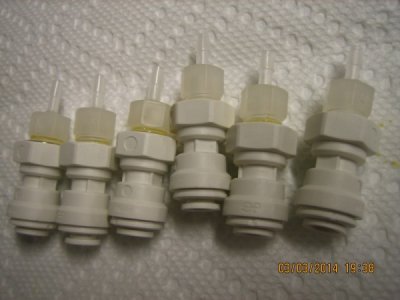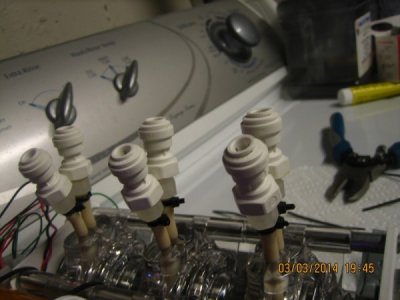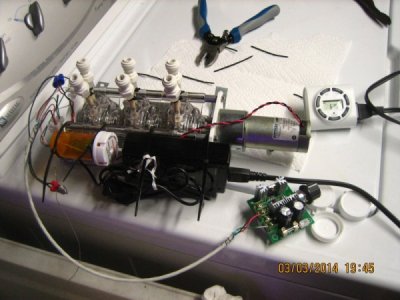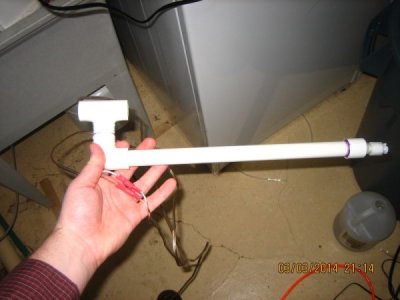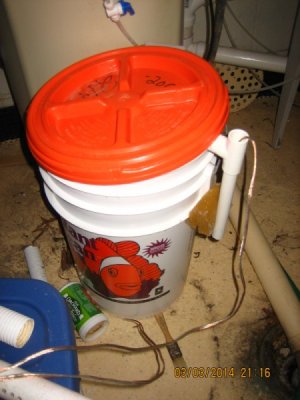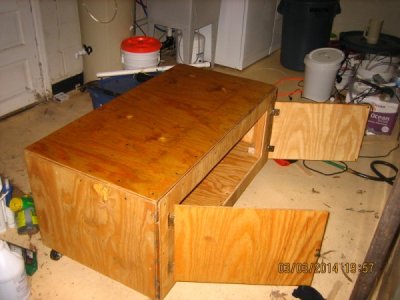From the article:
How to Perform Water Changes
There are many ways to perform water changes, and some of these are outlined below.
Large batch water changes: These changes are what most aquarists think of as water changes - remove some aquarium water and replace it with new water. Reef aquarists often talk of changing 10-30% per month this way. These changes can be completely manual, using buckets and siphons. They can also be partially or almost completely automated. Some systems allow aquarists to open and close appropriate valves (or turn on appropriate pumps), and pumps take care of the actual removal and addition of water.
In doing batch changes, aquarists should consider the changes in the water parameters that will result, and be sure they do not excessively stress organisms. Differences in salinity and temperature are most likely to be significant, and the larger the change, the more stressful it can become for the aquarium's inhabitants. If there is substantial ammonia in the new water, as there may be in artificial salt water or possibly in natural seawater that has been stored for a while, that can also be stressful. Obviously, any organisms that become exposed to the air can also be greatly stressed. Differences in other water parameters are less likely, in my opinion, to be particularly stressful during water changes, with the possible exception of certain trace elements which may be more toxic in raw artificial seawater when not bound to organics than after they have had a chance to become bound in the aquarium or in natural seawater. The normally encountered differences in calcium, magnesium, alkalinity, nitrate, phosphate, silica, pH, etc., are unlikely to unduly stress organisms during water changes up to 30-50% using natural seawater or aerated artificial seawater, in my opinion.
Small batch water changes: These changes are similar to the large changes above, but are much smaller and are done more frequently. Daily changes of 0.25% to 2%, for example, can be used. One could also do a series of consecutive small water changes on the same day. This method ensures that organisms near the top of the aquarium are not exposed to the air, and that water parameter shifts are less sudden. These types of changes can be done in a variety of ways, such as by removing water via a skimmer and replacing it once a day, or by simply taking out an amount (such as a half gallon) and replacing it once a day (automatically or manually). While lots of smaller changes (say, 30 changes of 1% each) are slightly less efficient than one larger one (30% in a single batch), the difference is small (30 changes of 1% each exactly matches one 26% batch water change), and consequently other factors of convenience or stress on organisms may be more important.
In doing batch water changes of 2% or less, aquarists need not particularly worry about the changes in the water parameters that will result, as long as the new water is of reasonable quality. For example, a 1% change with new water at 55°F from a basement reservoir will change the aquarium temperature only from 81°F to 80.74°F. Differences in salinity are also unlikely to be significant.
Continuous water changes: Continuous water changes, despite their name, are not necessarily performed every minute of every day. The distinguishing feature of these changes is that water is added at the same time that it is removed. The actual rate of addition can be high or low. Reef aquarists (myself included) most often perform these types of water changes with two matched pumps, one that removes the old water and one that adds the new water. Often these pumps are part of the same mechanism (such as two sets of tubing on a peristaltic pump or two heads on a diaphragm pump), but that is not a requirement. I use a dual head diaphragm pump capable of a maximum of 30 gallons per day for each head (a Reef Filler pump from Champion Lighting). In my setup, once I have a 44-gallon trash can full of new salt water, all I do to perform a 44 gallon or smaller water change is plug in the pump. The wastewater is sent down the drain. Sometimes I change 44 gallons in one shot, taking about a day and a half. Sometimes I pump for a few hours at a time, and then wait for a few days.
These changes are slightly less efficient than single batch water changes of the same total volume. A continuous water change of 30% exactly matches one batch 26% water change. As with very small batch water changes, these have the advantage of neither stressing the organisms (assuming the change is done reasonably slowly), nor altering the water level in the aquarium. The ease of doing such changes automatically also makes it far more likely that busy or lazy aquarists will actually do them.
Conclusion
Water changes are a good way to help control certain processes that serve to drive reef aquarium water away from its starting purity. Some things build up in certain situations (organics, certain metals, sodium, chloride, nitrate, phosphate, sulfate, etc.), and some things become depleted (calcium, magnesium, alkalinity, strontium, silica, etc.). Water changes can serve to help correct these imbalances, and in some cases may be the best way to deal with them. Water changes of 15-30% per month (whether carried out once a month, daily or continuously) have been shown in the graphs above to be useful in moderating the drift of these different seawater components from starting levels. For most reef aquaria, I recommend such changes as good aquarium husbandry. In general, the more the better, if carried out appropriately, and if the new salt water is of appropriate quality.
Calcium and alkalinity, being rapidly depleted in most reef aquaria, are not well controlled, or even significantly impacted by such small water changes. In order to maintain them with no other supplements, changes on the order of 30-50% PER DAY would be required. Nevertheless, that option may still be a good choice for very small aquaria, especially if the changes are slow and automatic.
 pumps missing in that picture but it it's mounted right next to left most ro containers. The picture was taken b4 I mounted it but it will take fresh salt water from right most 55gal tank to the tank in the living room and dump the old saltwater down the laundry sink drain
pumps missing in that picture but it it's mounted right next to left most ro containers. The picture was taken b4 I mounted it but it will take fresh salt water from right most 55gal tank to the tank in the living room and dump the old saltwater down the laundry sink drain

